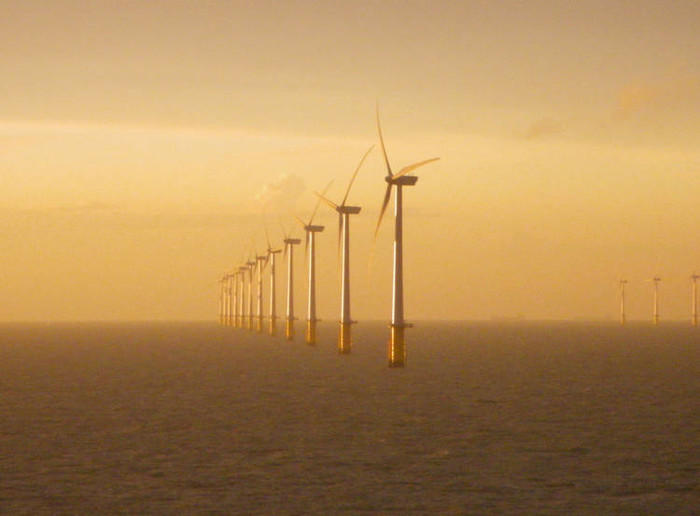
Flickr user Wessex Archaeology
Thanet Wind Farm
The development of offshore wind energy along the Atlantic Coast is gaining momentum thanks in part to Coastal Carolina University, The North Strand Wind Team and the City of North Myrtle Beach.
A recent collaboration between the U.S. Department of Energy Savannah River National Laboratory, Santee Cooper, N.C. Offshore Wind Coalition, N.C. Department of Commerce, N.C. Solar Center, N.C. Sustainable Energy Association, S.C. Energy Office, Clemson University Restoration Institute, S.C. Coastal Conservation League, Coastal Carolina University, the North Strand Coastal Wind Team and the City of North Myrtle Beach marked the first step into off shore wind exploration.
According to Coastal Carolina University's press release:
The objective of the two-state meeting was to explore ways to leverage each state's unique experience, knowledge and resources to accelerate the deployment of offshore wind energy in a way that is mutually beneficial to both states.
Stated in a report by the National Renewable Energy Laboratory:
33 percent of the total East Coast offshore wind energy within 50 miles of the shoreline is located off the coast of North and South Carolina, and both states have offshore wind energy resources that exceed their current installed electricity generation capacity.
But there is more blowing in the air than just hot air. The exploration of offshore wind production facilities along the cost also means new industry. New industry means new jobs. Due to the unique geographic region North and South Carolina are prime to benefit form wind exploration.
Ralph Nichols, wind energy program manager at the Savannah River National Laboratory states:
This excellent wind resource, combined with outstanding port facilities in the region, should attract investment by utilities and the offshore wind industry.
Jen Banks of the N.C. Solar Center adds:
This is an industry where about 10 percent of the cost is materials and 90 percent is labor, and that represents a significant advantage for the lower-cost labor markets of the Southeast to attract manufacturing.
However some tourist based organizations are looking to take some wind out of the sails. Concerns are popping up about the effects of electric wind stations off the coast will cause an eyesore to visitors to the area. While environmentalist are concerned about the effects that facilities may have along the coast regions.
The 12 organization committee members are taking all of the concerns into account and plan on exploring each and everyone carefully.
- Please check out the press release from Coastal Carolina University for more information.